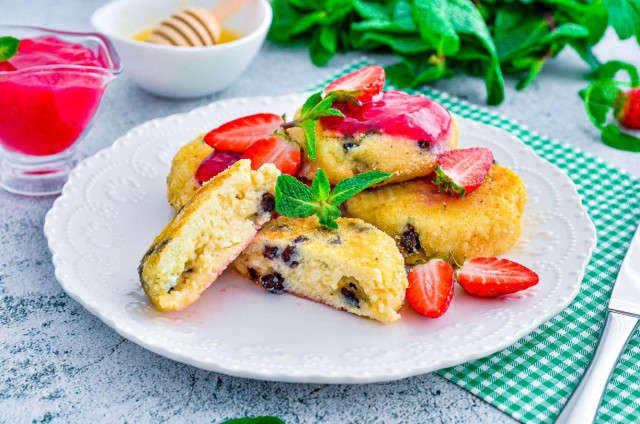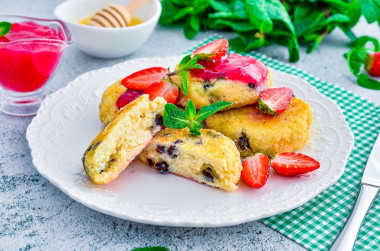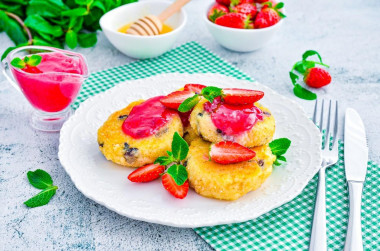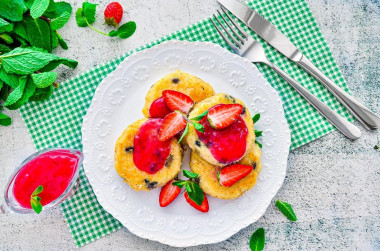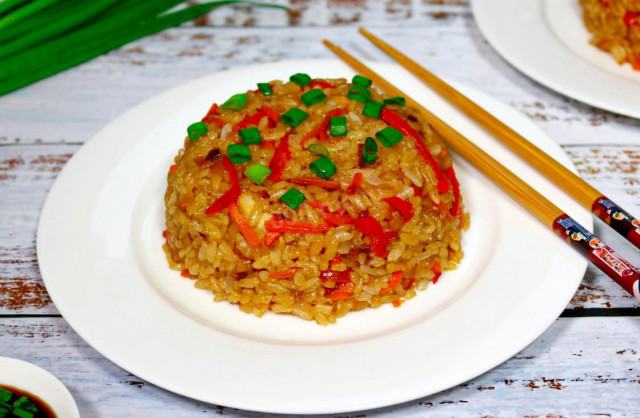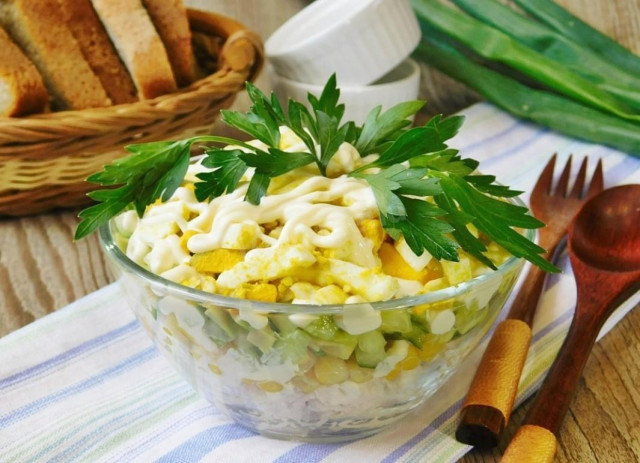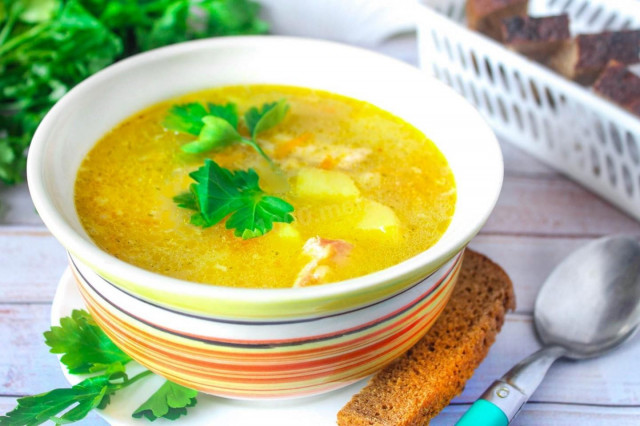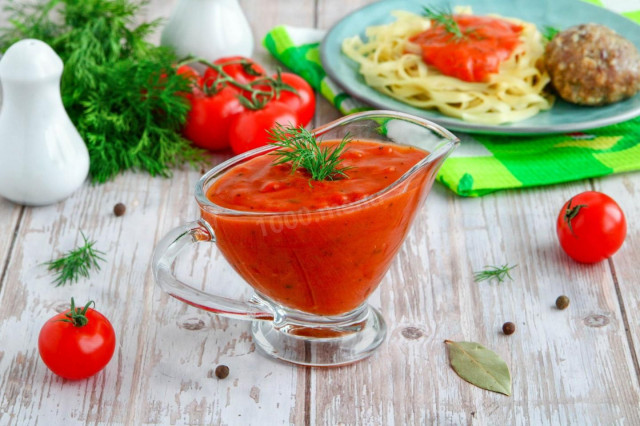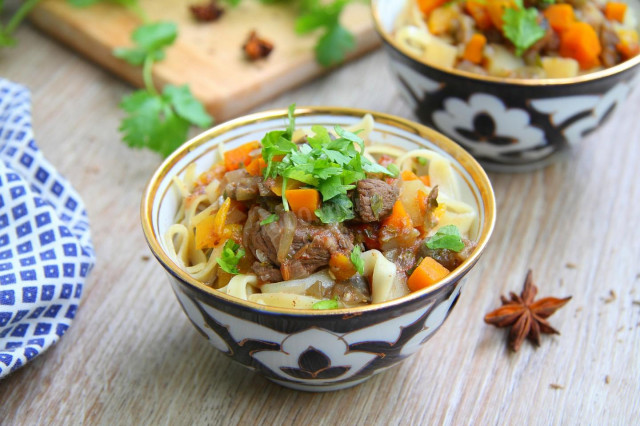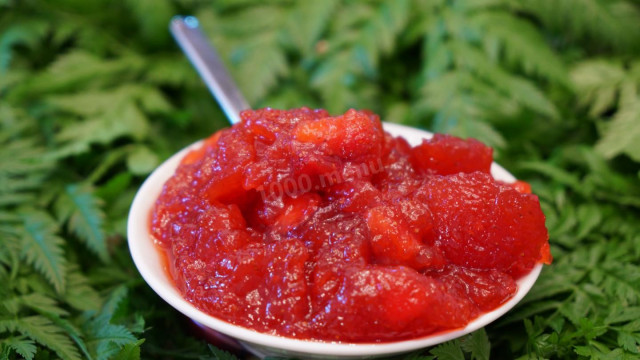Composition / ingredients
Step-by-step cooking
Step 1:
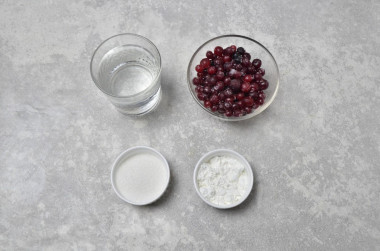
How to make semolina cutlets? Prepare the products. Semolina cutlets are usually served with gravy in the form of berry jelly. Therefore, first of all, cook the jelly. Prepare the products for him. Berries for jelly are suitable for any, you can use both fresh and frozen. I have cranberries, it's a classic combination. Put sugar to taste, the sourer the berry, the more sugar.
Step 2:
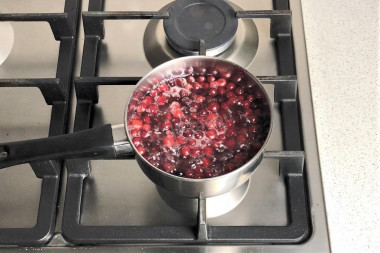
Take a saucepan, pour 500 ml of water into it and put it on high heat. As soon as the water boils, pour the berries into it. Wait for the water to boil again and remove the saucepan from the heat. Cover it with a lid and leave it for 10 minutes.
Step 3:
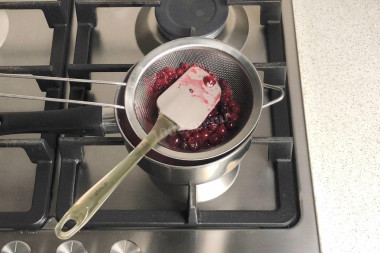
Then discard the berries on a sieve, return the broth to the saucepan. Rub the berries through a sieve with a silicone spatula. It is more convenient to do this immediately in a saucepan, you will stain less dishes. Rekindle the fire under the saucepan. Pour sugar into it.
Step 4:
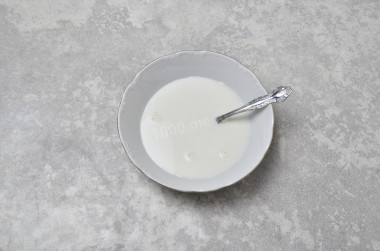
Pour starch into a separate bowl. You can take both potato and corn, the latter will need twice as much. Fill it with 100 ml of water taken from the total amount. Mix well.
Step 5:
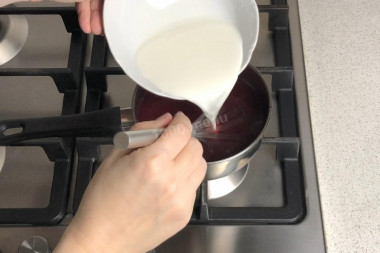
With continuous stirring with a whisk, pour the diluted starch into the berry broth.
Step 6:
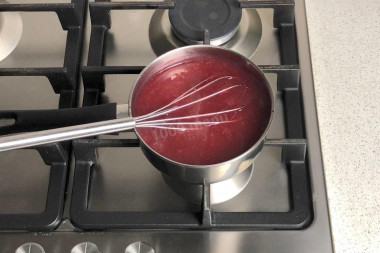
Cook the jelly, stirring, until boiling. It will thicken and start "puffing" bubbles. As soon as this happens, turn off the fire. leave the jelly to cool.
Step 7:
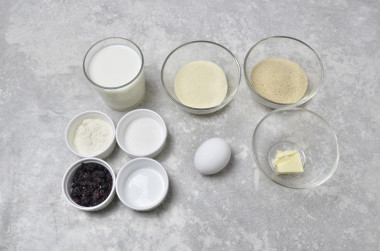
Next, take care of the cutlets directly. From this amount of products you will get 4 cutlets, take this into account when cooking, if necessary, take more products. Milk is suitable for any fat content, you can dilute it with water. It is possible to roll cutlets before frying both in breadcrumbs and in flour. But it is better to fry not on pure butter, but on a mixture of it with vegetable oil. You can not add raisins.
Step 8:
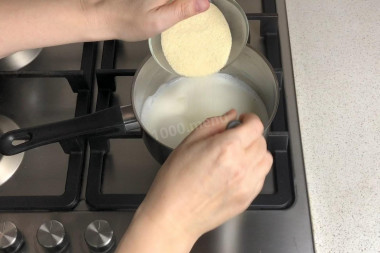
Cook semolina porridge. How to cook porridge? Take a saucepan with a thick bottom, pour milk into it, add sugar and salt. Put a saucepan on a small fire and bring the milk to a boil. Pour semolina into the milk in a thin stream. To prevent lumps from forming in the porridge, do it with continuous stirring, it is better to take a whisk for this purpose.
Step 9:
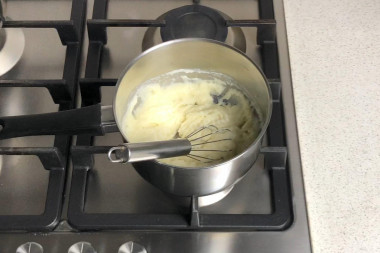
Cook the porridge for a very short time, a couple of minutes will be enough. It will thicken quickly and it will become difficult to stir. As soon as this happens, turn off the fire and leave the porridge to cool. While the porridge is cooling, pour boiling water over the raisins for 10-15 minutes. Then throw it on a sieve and rinse well.
Step 10:
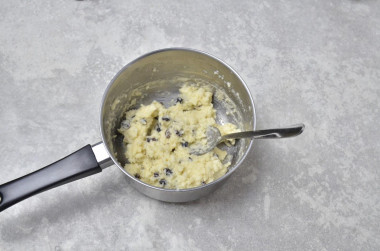
When the porridge cools down, pour the steamed raisins into it. Beat in the egg. Be sure to wash the eggs before use, as even the seemingly clean shell may contain harmful bacteria. It is best to use food detergents and a brush. Add flour and mix all the products thoroughly. You should get a thick viscous mass. You can also add vanilla to it on the tip of a knife.
Step 11:
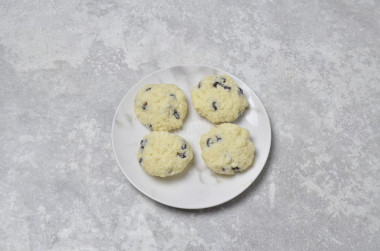
Make small round cutlets out of it. To prevent porridge from sticking to your hands, moisten them with cold water.
Step 12:
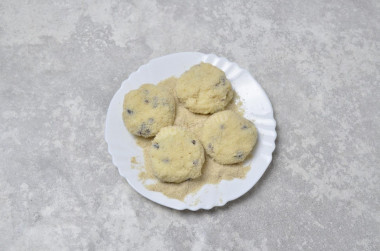
Pour breadcrumbs (or flour) into a flat plate. Roll the cutlets in them.
Step 13:
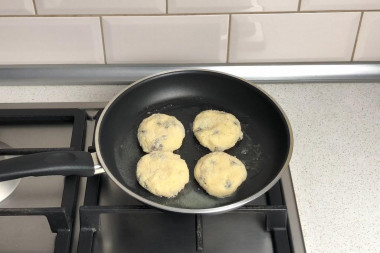
Heat a frying pan over low heat. Put the butter on it and melt it. I always add a little vegetable oil to the butter, then the oil will not burn when frying. Put the breaded cutlets in the pan.
Step 14:
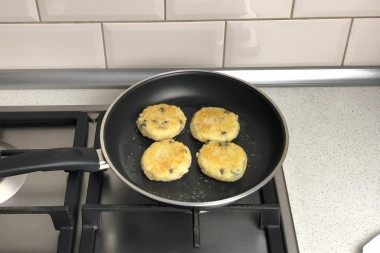
Fry them until golden brown on both sides, it will take about 5 minutes.
Step 15:
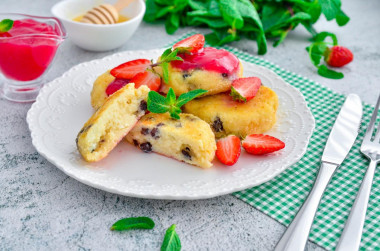
Serve semolina cutlets with berry jelly. Enjoy your meal!
How to choose semolina, cook the perfect porridge from it and much more, read the article about semolina and semolina .
Any oils are useful only until a certain temperature is reached - the point of smoking, at which the oil begins to burn and toxic substances, including carcinogens, are formed in it. How to determine the roasting temperature and choose the best oil for frying, and which is better not to use at all, read here .
For cooking, it is better to use filtered or bottled water that is neutral to taste. If you use tap water, keep in mind that it can give the dish an unpleasant characteristic taste.
Caloric content of the products possible in the composition of the dish
- Whole cow's milk - 68 kcal/100g
- Milk 3.5% fat content - 64 kcal/100g
- Milk 3.2% fat content - 60 kcal/100g
- Milk 1.5% fat content - 47 kcal/100g
- Concentrated milk 7.5% fat content - 140 kcal/100g
- Milk 2.5% fat content - 54 kcal/100g
- Semolina - 340 kcal/100g
- Whole durum wheat flour fortified - 333 kcal/100g
- Whole durum wheat flour, universal - 364 kcal/100g
- Flour krupchatka - 348 kcal/100g
- Flour - 325 kcal/100g
- Granulated sugar - 398 kcal/100g
- Sugar - 398 kcal/100g
- Starch - 320 kcal/100g
- Butter 82% - 734 kcal/100g
- Amateur unsalted butter - 709 kcal/100g
- Unsalted peasant butter - 661 kcal/100g
- Peasant salted butter - 652 kcal/100g
- Melted butter - 869 kcal/100g
- Raisins - 280 kcal/100g
- Kishmish - 279 kcal/100g
- Salt - 0 kcal/100g
- Water - 0 kcal/100g
- Chicken egg - 80 kcal/100g
- Breadcrumbs - 347 kcal/100g

